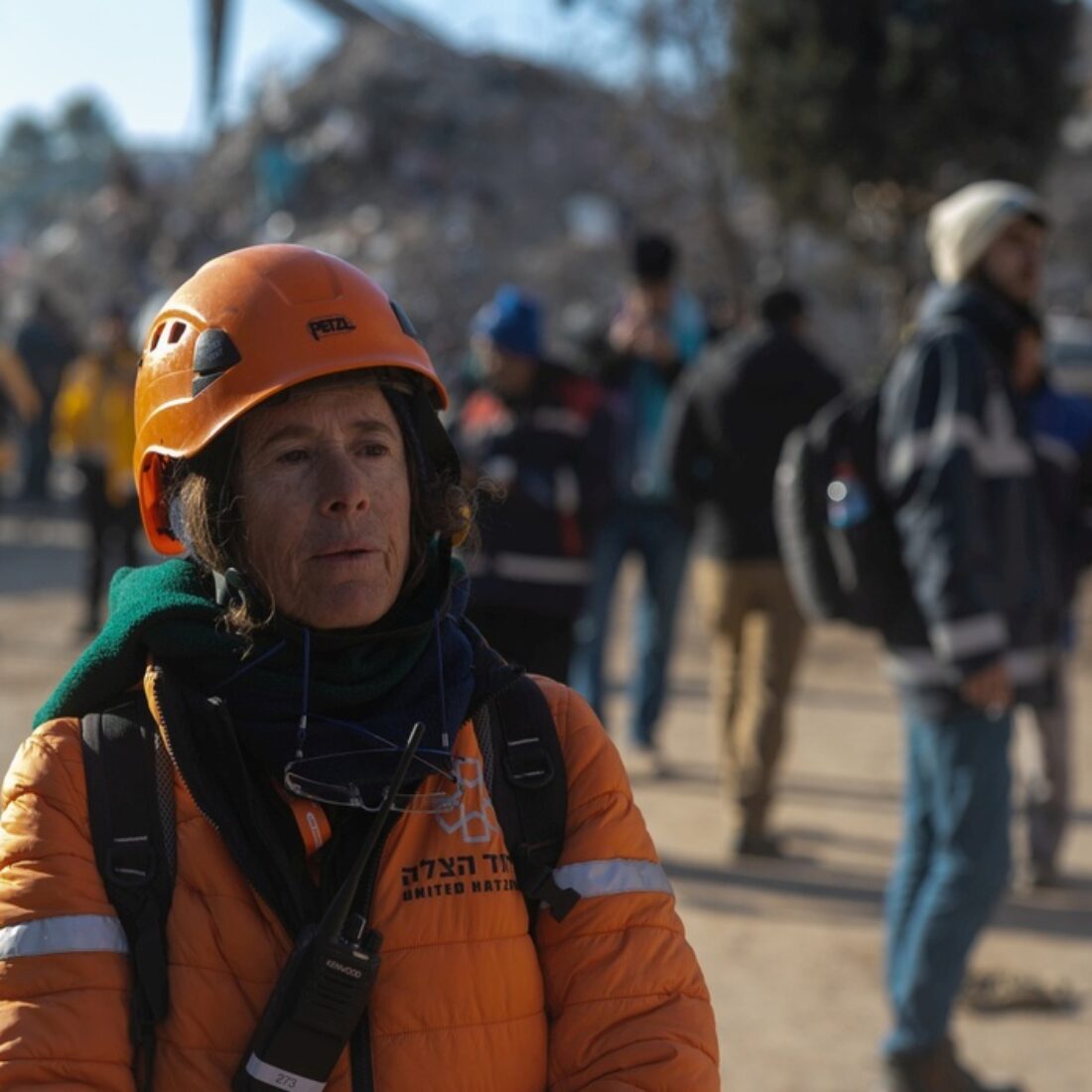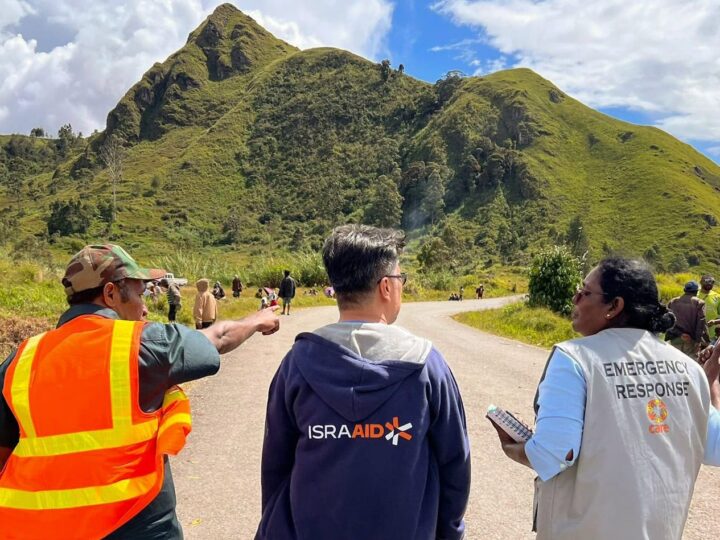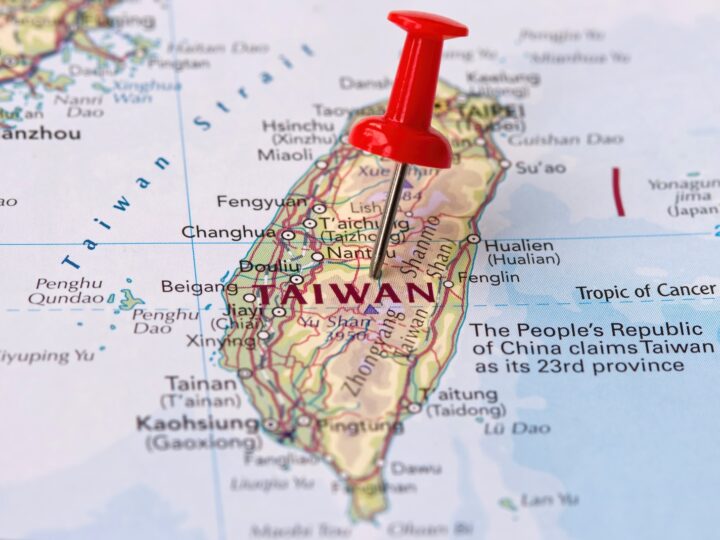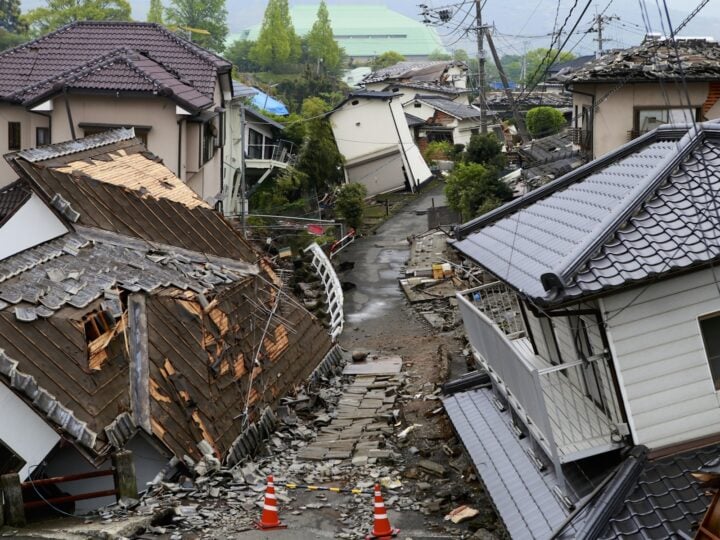A Turkish man named Eli frantically approached volunteers from United Hatzalah of Israel after his sister was confirmed dead following the February 6 earthquake.
He heard noises coming from the rubble of his sister’s house in Kahramanmaraş, he explained through an interpreter, and hoped his two nieces were still alive. Could the Israelis dig through the wreckage and find them?
Yes, they could… but there was no guarantee of a happy outcome. After all, the quake and its aftershocks have killed at least 41,000 people in Turkey and 5,800 in Syria thus far.
“As our rescue team worked tirelessly for several days to try and reach the girls without causing any further danger, a bond developed between Eli and myself,” recalls Sophie Donio, a UH volunteer emergency medical technician and member of its Psychotrauma and Crisis Response Unit (PCRU).
“Eli regularly asked for updates on the rescue efforts and was incredibly supportive, bringing us food and drinks regularly. I sometimes tried to temper his expectations, reminding him that just because we heard something, it didn’t necessarily mean that his nieces were still alive.”
“We had to silence those crying out in anguish or pain, in hopes that we could hear someone alive deep below us.”
At some point the sounds stopped and Donio hugged Eli tightly as she explained the grim situation and warned him to prepare himself.
The next day, a miracle happened.
“After I had gone to sleep thinking about Eli, the next morning our rescue teams were finally able to reach his two nieces. They were still alive!” Donio tells ISRAEL21c.
“The girls had hidden under a bed when the earthquake had struck and survived for 80 hours in a rather large space in between the rubble. They didn’t need any assistance other than food, water and rest.”
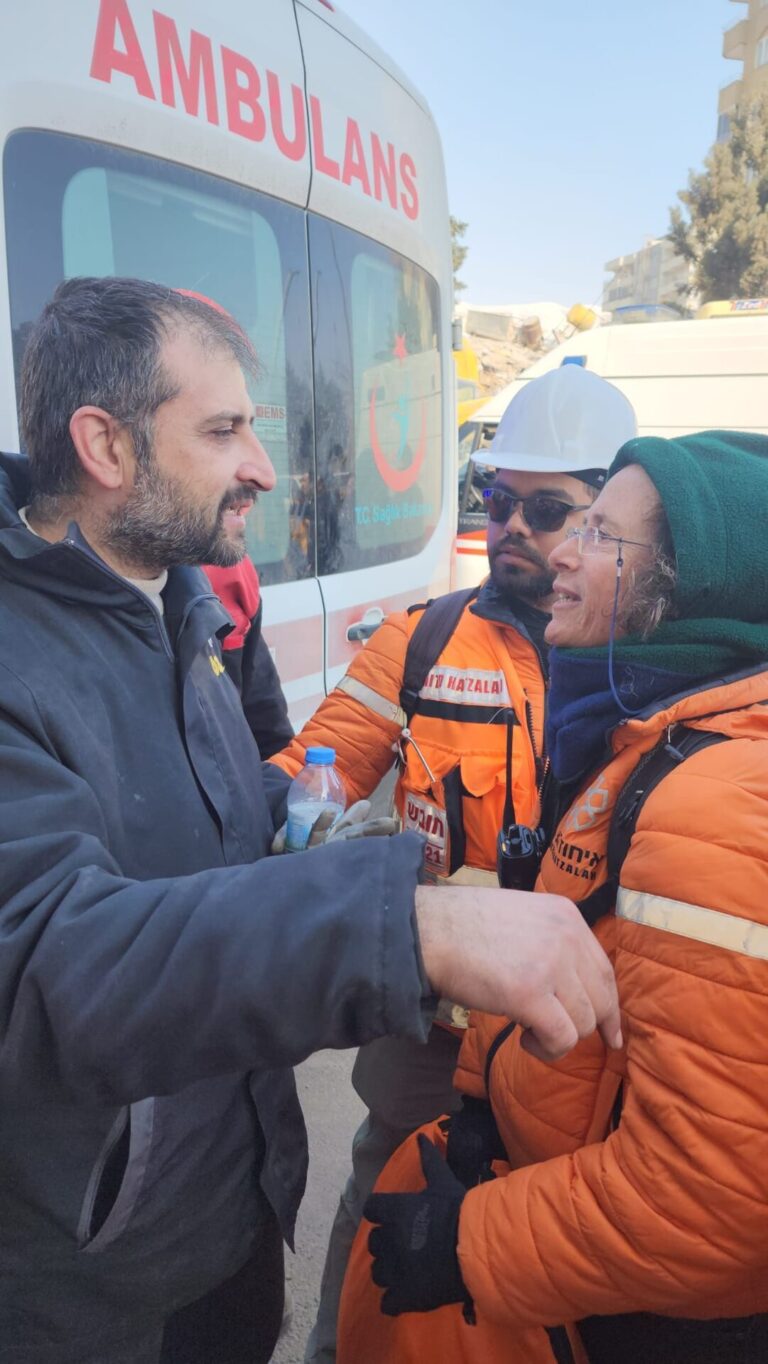
“It was an amazing turn of events and sharing this joyful moment with Eli was an incredible experience,” says Donio.
Despair and hope
Over the course of the six days that the 35 UH volunteers were in Kahramanmaraş, they freed 19 live people from the rubble, some with the help of Israeli Defense Forces specialists.
“We had to silence those crying out in anguish or pain, in hopes that we could hear someone alive deep below us,” Donio says.
“Sometimes we used thermal scanners from drones to identify if a person was still alive in the rubble. The excitement of finding people alive under the destruction was the reason we kept on going and the ability to rescue others was all that we were hoping for.”
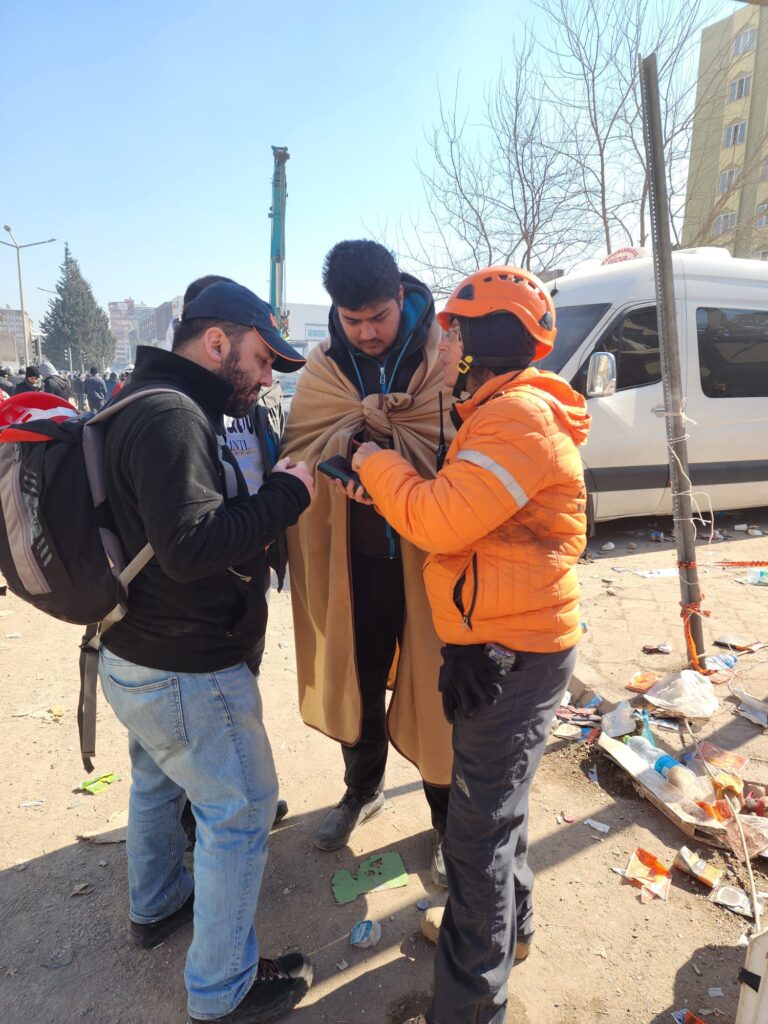
The human tragedy she witnessed is immeasurable, Donio says.
“Each of us rescuers had many moments of despair and hope. One moment we dug in the freezing cold, quietly finding only the bodies of the deceased, while in other moments we got to experience the jubilation of finding a person alive.”
Each rescue effort involved an engineering team and a physician who climbed into the rubble to provide initial treatment before attempting to extract the individual – in itself a dangerous act that could end in tragedy.
Although Donio helped in these efforts, her primary role “was to provide assistance in the moments when we weren’t successful, to those who are experiencing emotional distress, whether it is our team members or the survivors who have lost everything.”
Commitment and connection
Donio, 57, is the founding director of the unique animal-assisted therapy program for children and teens at the Dolphin Reef in Eilat, running since 1991. (Click here to watch a moving documentary, “The Dolphin Boy,” about her world-renowned work.)
In Turkey this month — and in Moldova last year as part of a UH humanitarian mission to aid Ukrainian refugees — Donio employed the four-step Israeli model of intervention that PCRU members are trained to use in disaster scenarios.
“The first step is commitment and connection. This is where the person intervening commits to assisting the person in need and builds a connection with them alleviating the sensation of loneliness,” she says.
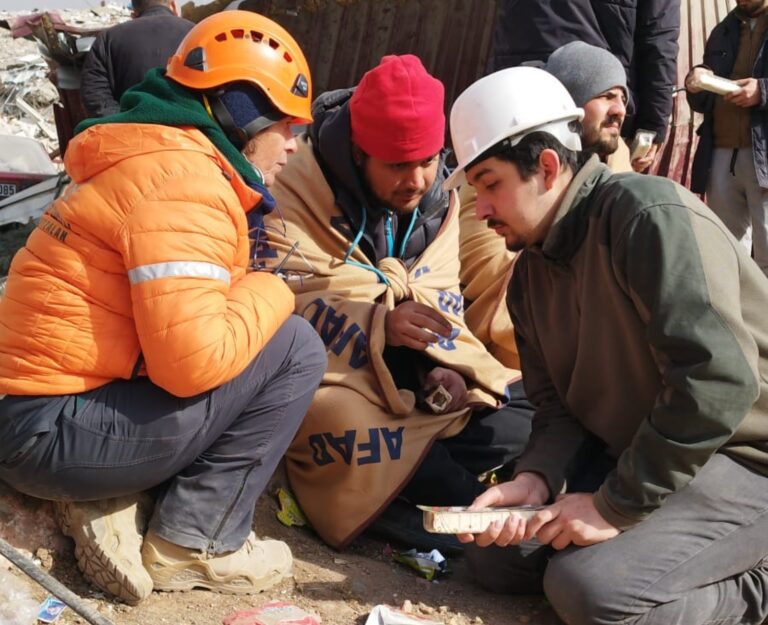
“The second step is to encourage the person in need of help to take positive action, thereby alleviating the sensation of helplessness. The third step is to ask short questions that force the person in need to think, thus engaging the logical side of their brain to quiet the emotional side.”
The final step is to help the person reconstruct the traumatic incident so that they have a cognitive and clear understanding of what happened and can conclude — together with the person providing the intervention — that the incident is over and that they are safe.
Debriefing superheroes
This intervention was not only for survivors but just as crucially for rescuers.
“Every evening, I led a special debriefing circle during which team members were allowed to decompress from the horrors they had witnessed during the day,” says Donio.
“Even the toughest members of our team, who have years of experience in responding to all types of emergencies, and who seemed to me like superheroes during the day, were crying and sharing their emotions at length.”
This debriefing, she explains, “is essential in order to maintain mental health and renew energies to continue our work the next day. Each of us needs to know that we too are not alone, nor are we helpless, even when we don’t succeed at rescuing survivors.”
The first rescue
Donio vividly recalls the first successful rescue in Kahramanmaraş.
“On the first night, we heard noises in one of the areas where we were digging. Using search-and-rescue dogs, engineering tactics, and our drone, we located and rescued a 12-year-old boy who was trapped. That was the first bright spot in our journey.”
The next day, they spent nine exhausting hours digging without finding any survivors. Just about to give up and return to their base camp for the night, suddenly they heard voices and continued the grueling task with renewed fervor.
“We extricated a young woman who was trapped under the destruction for two and a half days. It lifted our spirits and we renewed our efforts,” Donio says.
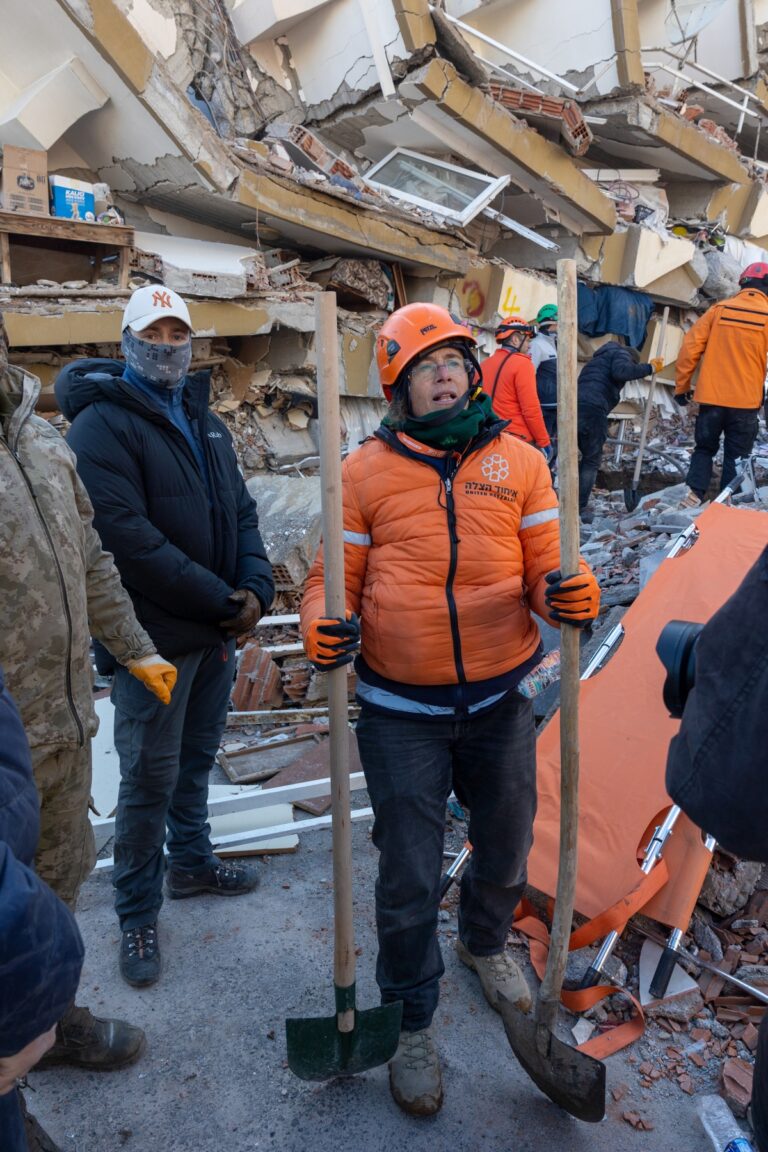
Whenever someone was pulled a person alive from the rubble, she says, “the local residents gathered around in groups and began chanting ‘Allahu Akbar’ [God is great] in praise of the rescue.”
The energy of the crowd was so intense that often police had to make enough space for the rescuers to extricate the victim.
Turks brought food to Israeli rescuers
Donio says the Israelis were constantly approached by Turkish people like Eli, desperate for help in locating their loved ones.
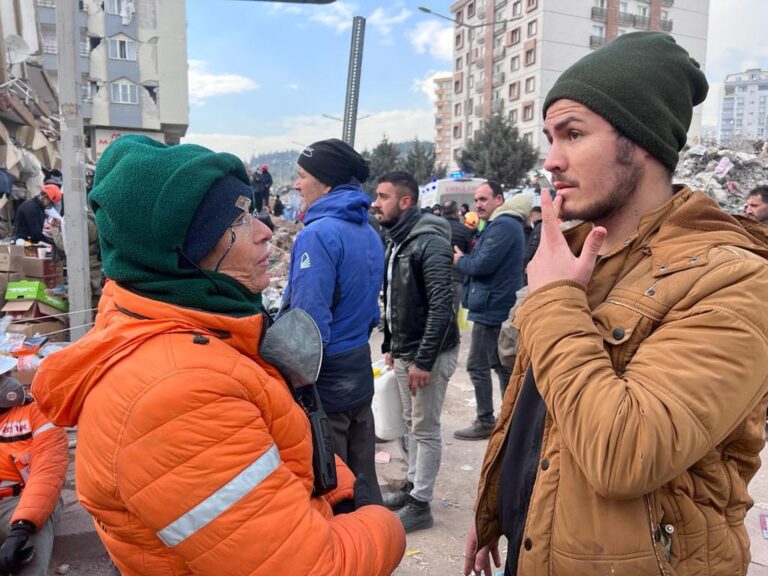
“We always went with them to check if we could hear voices or tapping, and if we didn’t hear anything we said we are sorry. It was a huge step for them that we came and checked thoroughly, and they were thanking us,” she says.
“And if we did hear something, we called the whole crew, checked if it was safe and if so we started to work. We worked all day long with no food and the local people brought us bread and soup so we could continue. Everywhere, everyone ran to us to thank us; we were very appreciated.”
The UH team even went to the hospital to offer help and were received warmly.
An urge to help
Though they were the first to arrive in Kahramanmaraş and set up places to sleep in a camp beyond the city where they often felt the earth shaking with aftershocks, the UH team was soon joined by the IDF delegation and then by humanitarian groups from countries including El Salvador, France and Germany.
It wasn’t easy for Donio to leave her dolphin therapy patients and her family for a week of difficult work that left her physically and emotionally exhausted.
“But it’s something from my gut, an urge to go and help. I felt it’s a mission,” says Donio, who speaks Hebrew, English, French and Portuguese.
“Although our rescue efforts were essentially only a drop in the ocean of destruction and devastation caused by this earthquake, I flew back to Israel knowing that we made a difference — whether by rescuing people from the rubble or by helping them carry on in the face of tragedy. And that is what we set out to do.”
Other Israeli relief efforts
As ISRAEL21c reported at the time, UH and several other Israeli humanitarian aid delegations flew to Turkey or sent supplies to help in the wake of the initial earthquake.
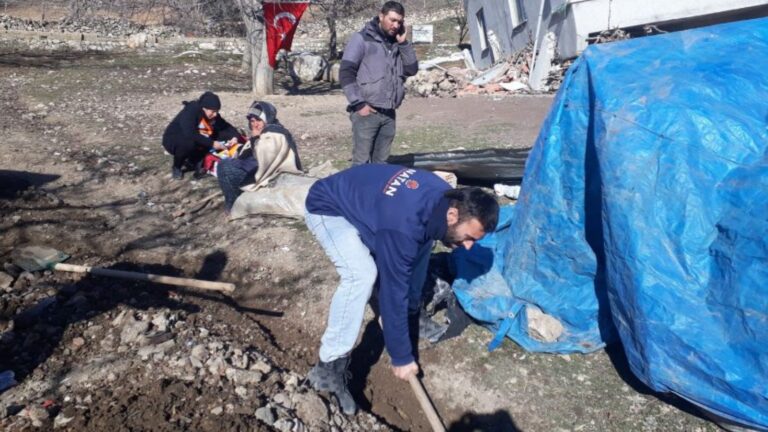
These include the IDF and its Home Front Command, the Foreign Ministry and its MASHAV international development agency, national emergency response network Magen David Adom, SmartAID, ZAKA, SID-Israel, SSF – Rescuers without Borders, Brit Olam, Israel Trauma Coalition, Latet, Cadena, Lev Echad, Social Delivery, Scientology Israel, JDC-Joint, NATAN Worldwide Disaster Relief and IsraAID.
According to Dana Manor of SID-Israel, who just returned from Turkey working with several of these organizations, many are still there.
“SID-Israel coordinates between the various NGOs on the ground and connects them with local authorities, Israeli government officials, local NGOs and more. We work to build partnerships to assess the needs on the ground as fast as possible and provide aid to victims affected by this tragedy,” she tells ISRAEL21c.
She noted that SID-Israel helped earthquake victims through its cooperation with Nimrod Arad at the Israel-Turkey Chamber of Commerce and with the Manufacturers Association of Israel and the Turkish Embassy in Israel.
“Israel’s business sector donated 180 tons of humanitarian equipment including food products, blankets, hygiene products and tents, all flown there free by Turkish Airlines in partnership with a local aid organization and delivered to families affected by the earthquake.”
Irrigation technology leader Netafim is an example of an Israeli company that worked with IsraAID in Turkey, she added.
“Netafim’s local knowledge and relationships with government and other stakeholders may have helped facilitate IsraAID’s work in the region by navigating bureaucratic hurdles, securing permits, or finding reliable transportation and logistics solutions. Collaborations like these can be very beneficial and help to create positive change in communities where they are implemented,” Manor says.
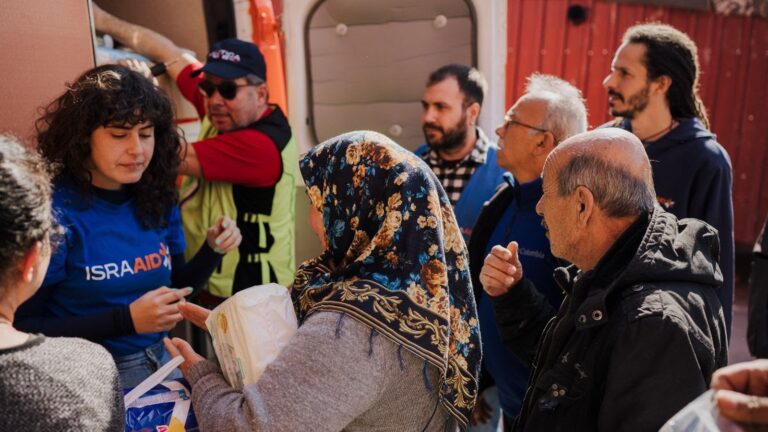
“IsraAID’s Emergency Response Team arrived only 30 hours after the initial 7.8 magnitude earthquake hit. And our professionals — including specialists in emergency logistics, water and sanitation, mental health, and more — are still in the affected area, bringing urgent relief to communities in desperate need,” said CEO Yotam Polizer.
“IsraAID’s team is focusing on large-scale relief distributions reaching thousands of people in cities across southern Türkiye, including Kahramanmaraş, Iskenderun, Antakya, Osmaniye, and Samandağ — the city near the epicenter of the recent 6.4 and 5.8 magnitude earthquakes killing at least three, injuring hundreds, and leaving even more damage in an area already reeling.”




